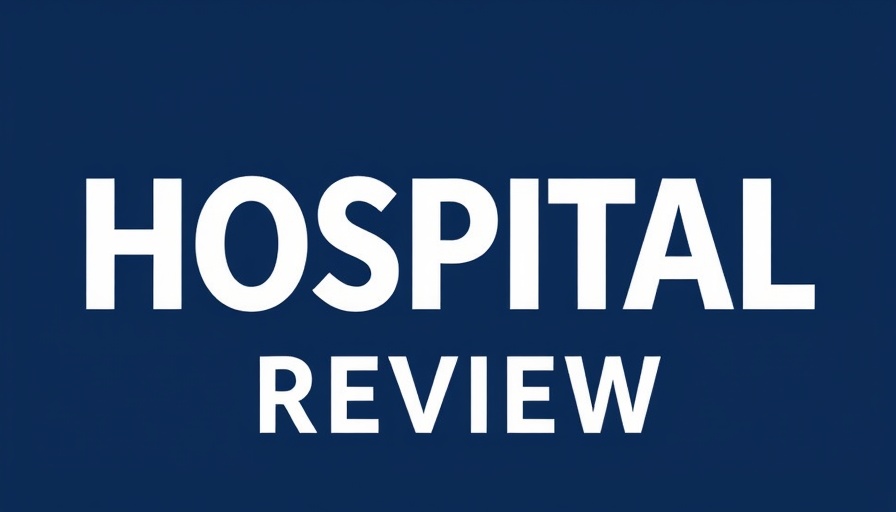
Modernizing EHRs: What Do CIOs Envision for the Future?
Electronic Health Records (EHRs) have been an essential part of healthcare systems for years, yet many Chief Information Officers (CIOs) believe it’s time for a major evolution. The desire for a more integrated, efficient, and user-friendly approach is echoed by CIOs across the U.S. As the healthcare landscape evolves, the next generation of EHR systems must include innovative technologies that enhance clinician workflows while improving patient care.
Harnessing the Power of AI in EHR Systems
CIOs like Dr. Jordan Tannenbaum from Saint Peter’s Healthcare System advocate for the integration of ambient AI tools within EHR systems. These tools can streamline clinical documentation by transcribing patient-clinician conversations seamlessly. Dr. Tannenbaum emphasizes that not only should these tools save time, but they should also convert critical conversation elements into discrete data points within the EHR. This shift could dramatically reduce clerical burdens on practitioners, ultimately letting them focus more on patient care.
Interoperability: A Crucial Challenge for EHR Users
While technological advancements are exciting, one critical limitation remains: interoperability. Dr. Tannenbaum points out that even current frameworks like TEFCA, which are aimed at facilitating data sharing among disparate EHR systems, are not sufficiently developed yet. The challenge of transmitting meaningful patient information across different platforms remains a significant obstacle for enhancing clinician workflows and patient outcomes.
Enhancing User Experience with Innovative Controls
In addition to AI advancements, CIO Steven Travers from Broward Health is focusing on user experience and voice technology. He envisions a future where clinicians can operate their EHR systems hands-free, particularly in high-pressure environments. This improvement could lead to both enhanced efficiency and safety during clinical procedures. By adopting voice and gesture controls, the potential for real-time documentation and patient engagement increases significantly.
AI as a Seamless Entity in Clinical Workflows
Kristin Myers, Chief Digital Officer at Northwell Health, shares the importance of embedding AI into EHR workflows. She believes that current AI solutions are often fragmented and do not integrate well into existing clinical operations, ultimately becoming a hindrance rather than a helper. To enhance their utility, AI solutions should function as real-time assistants, delivering personalized recommendations at the point of care. When properly integrated, AI can transform EHRs into intelligent platforms that truly support clinician decisions without disrupting their workflows.
The Importance of Cybersecurity in Healthcare Automation
As healthcare systems evolve, securing patient information remains paramount. CIOs are increasingly calling for robust cybersecurity measures, including zero-trust models and AI-driven anomaly detection. Ensuring that EHRs are secure not only protects sensitive patient data but also builds trust between healthcare providers and patients. The evolving landscape of technology demands that clinicians and administrators prioritize cybersecurity as a critical component of healthcare automation.
What This Means for Small Practices and Independent Providers
The implications of these innovations extend significantly to independent physicians and small practices. By adopting healthcare automation tools, practices can optimize their workflows and enhance patient engagement. Solutions focusing on remote therapeutic monitoring and voice AI agents not only boost practice efficiency but also enhance the overall quality of care.
As healthcare continues its trajectory towards more automated and intelligent systems, the insights from CIOs reveal a consensus: The next generation of EHRs must empower clinicians to work smarter, allowing them to devote more time to patient care. This evolution is not just about technology; it's about improving health outcomes and ensuring that the focus remains on the patient.
Take Action: Embrace the Future of Healthcare
As the landscape of healthcare technology changes at a rapid pace, it's crucial for independent providers and small practices to stay informed and adaptable. Embrace the innovations in EHR systems and consider how AI, automation, and enhanced user experiences can optimize your practice operations. Assess available healthcare business tools to take your practice to the next level, ensuring that you continue delivering the best possible care to your patients.
 Add Row
Add Row  Add
Add 




Write A Comment